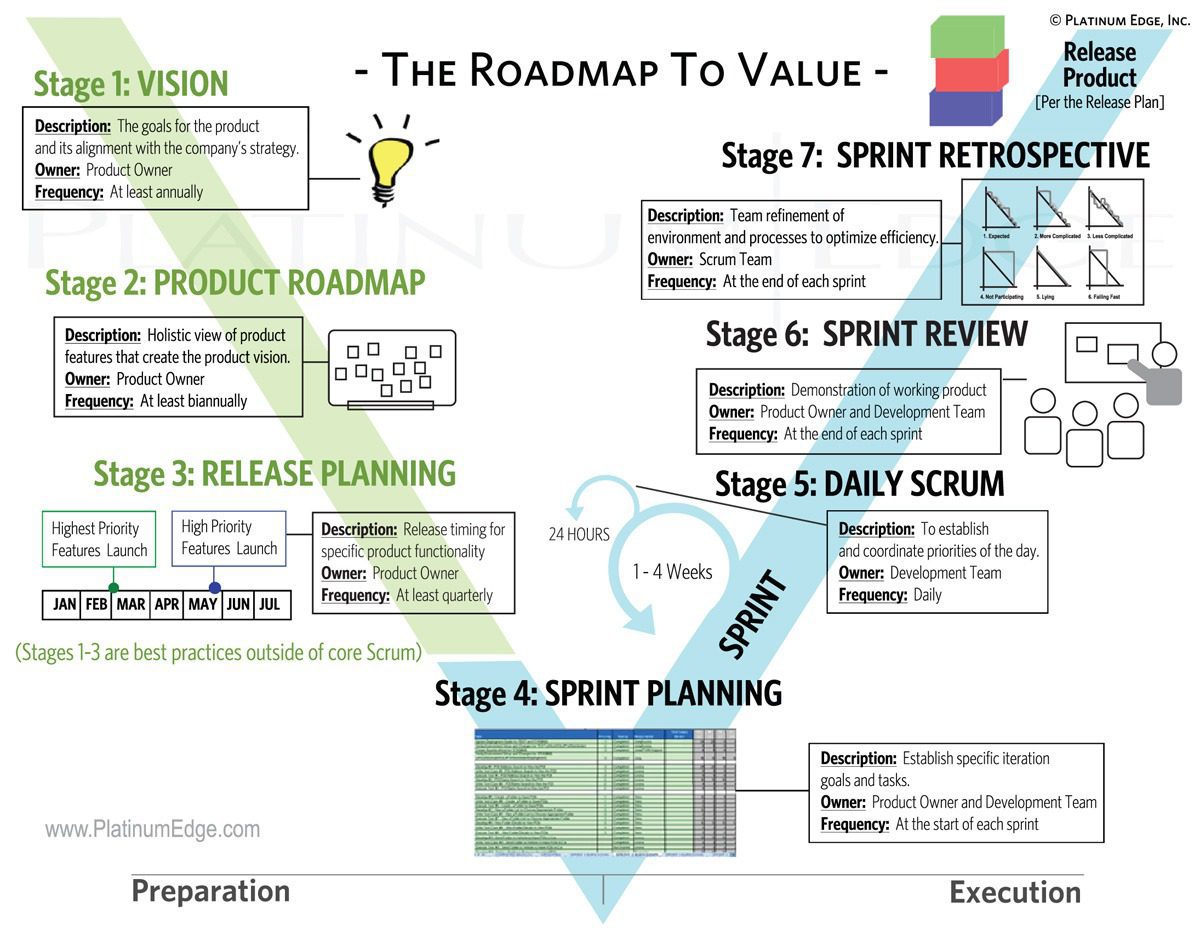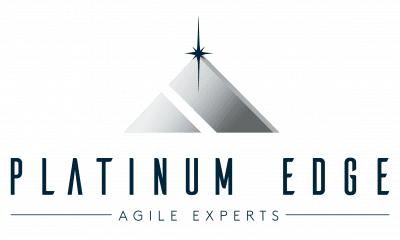The Roadmap to Value is a high-level view of an agile project. The stages of the Roadmap to Value are described in the list following the diagram:

- In Stage 1, the product owner identifies the product vision. The product vision is a definition of what your product is, how it will support your company or organization’s strategy, and who will use the product. On longer projects, revisit the product vision at least once a year.
- In Stage 2, the product owner creates a product roadmap. The product roadmap is a high-level view of the product requirements, with a loose time frame for when you will develop those requirements. Identifying product requirements and then prioritizing and roughly estimating the effort for those requirements are a large part of creating your product roadmap. On longer projects, revise the product roadmap at least twice a year.
- In Stage 3, the product owner creates a release plan. The release plan identifies a high-level timetable for the release of working software. An agile project will have many releases, with the highest-priority features launching first. A typical release includes three-to-five sprints. Create a release plan at the beginning of each release.
- In Stage 4, the product owner, the scrum master, and the development team plan sprints, also called iterations, and start creating the product within those sprints. Sprint planning sessions take place at the start of each sprint, where the scrum team determines what requirements will be in the upcoming iteration.
- In Stage 5, during each sprint, the development team has daily scrum meetings. In the daily meeting, you spend no more than 15 minutes and discuss what you completed yesterday, what you will work on today, and any roadblocks you have.
- In Stage 6, the team holds a sprint review. In the sprint review, at the end of every sprint, you demonstrate the working product created during the sprint to the project stakeholders.
- In Stage 7, the team holds a sprint retrospective. The sprint retrospective is a meeting where the team discusses how the sprint went and plans for improvements in the next sprint. Like the sprint review, you have a sprint retrospective at the end of every sprint.

